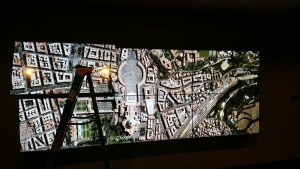ProAV technology plays a central role in the function of a control room. Typical control room installations include an array of large format displays driven by a display wall processor that accepts inputs from a variety of information sources: desktop computer signals, broadcast and security video, among others. Modern display wall processors incorporate network elements, displaying network computers and video cameras and provide the ability to control sources displayed on the control room display wall. All this information is distributed among all operators involved in managing the system and is the shared “mental picture” of the content being monitored, supported and reinforced by the AV system. The limitation of such a system is that only operators who are physically present in the control room are able to view the information and collaborate with other users.
Recognizing the need to stream the content displayed in the control room to these remote spaces, a trend emerged in the ProAV market to design and implement “AV networks”. These AV networks consisted of a central AV matrix switch, capable of taking any input signal and replicating it to one or more outputs and AV cabling connecting all the spaces and the display wall processor together. Unfortunately, this solution is fraught with issues that limit the usefulness of the solution as these AV networks are custom designs that can’t be modified by the end user, and require costly and time consuming professional services to make changes. Furthermore, the control system also presents a custom user interface that requires training to operate, is rarely dynamic in nature and requires costly programming to change. These AV networks are also based on inefficient media such as RGB or DVI cabling, which are costly, space inefficient and offer limited transmission distances, requiring even more cost and complexity if remote locations want access to information present in the control room. All of this adds up to a system that is limited by its underlying technology and can’t easily change, making users live with the system rather than have the solution evolve as their needs change over time. As IT technology advances, AV systems are firmly planted in the present, generally incapable of accommodating future needs, requiring a costly and disruptive upgrade to keep up with the newest networking and personal computer technologies.
